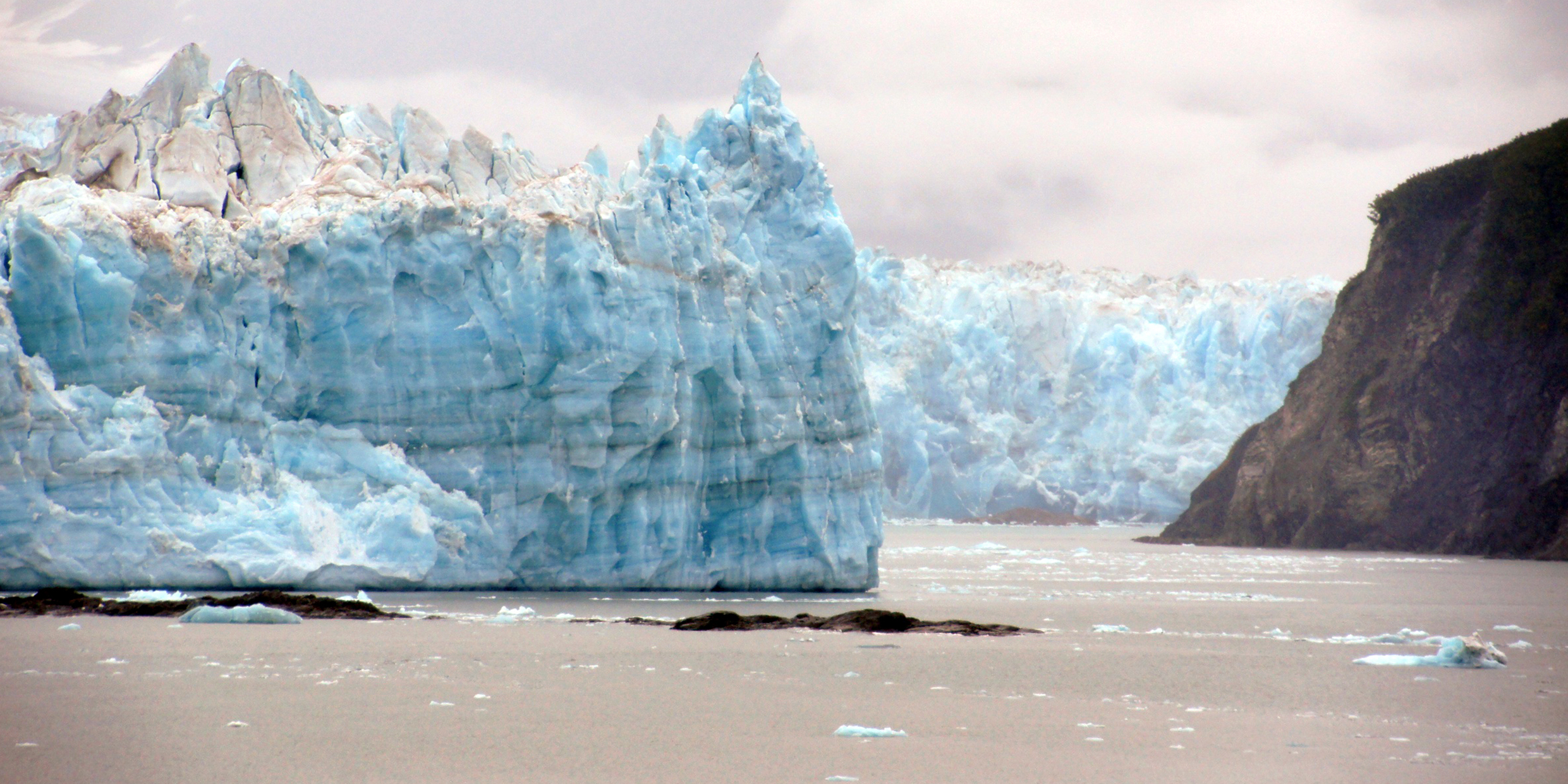Originally published 22 September 1986
Alaska’s majestic Hubbard Glacier is on the move. An advancing tongue of ice has sealed off the mouth of the Russell Fjord, blocking its connection with the sea. The fjord has has become a 32-mile-long lake contained behind an ice dam, and the level of the lake is rising.
Quite aside from the immediate danger to salt-water wildlife in the lake, there are two potential scenarios for disaster at Russell Fjord. If the ice dam at the mouth of the fjord gives way, the outrushing waters of the lake will threaten the coastline, and particularly the nearby fishing town of Yakutat.
Or, the lake behind the ice dam could fill to the point where the water overflows the walls of the valley and finds a new path to the sea down the channel of the Situk River. The sudden muddy increase in the volume of the river would destroy the salmon fishery upon which the citizens of Yakutat depend.
Both scenarios for disasters had spectacular precedents during the most recent Ice Age.
Ice dam buildup
Sometime between ten thousand and twenty thousand years ago, glaciers pushing down from Canada sealed off the channel of the Clark Fork River in the northern panhandle of Idaho. The basin of the Clark Fork in western Montana is rimmed on three sides by mountains. It is drained through a narrow channel at the northern end of the Bitterroot Mountains into the valley of the Columbia River and thence to the Pacific.
When ice dammed the channel, the basin began to fill. A voluminous lake, which geologists call Lake Missoula, came into being.
Ice is a very unstable material for a dam. Eventually the barrier on the Clark Fork River gave way and the impounded waters of Lake Missoula poured out in a mighty flood unlike anything in historic memory.
The volume of water released by the emptying of Lake Missoula may have briefly equaled a hundred Mississippi Rivers. This terrible surge swept across eastern Washington State, stripping and incising the land. Plants and animals were swept away. The famous Grand Coulee canyon was excavated. The gorge of the Columbia River was scoured. The waters left in their wake a barren, tortured landscape that is known today as the Scablands.
If the glacial dam at Russell Fjord gives way there will be a modest repeat of the Scablands flood. If the dam holds and the waters of Russell Lake spill over the valley walls, there is another Ice Age precedent.
Fifteen thousand years ago, when all of Canada and New England lay under a thick glacial mantle, the climate in the western United States was cooler and wetter than it is today. More precipitation fell into the Great Basin of Nevada and Utah, and less evaporated. Utah’s Great Salt Lake grew to be the size of Lake Michigan. Geologists call that vast inland sea Lake Bonneville.
The lake slowly filled the landlocked basin, until at last the water began to trickle over the lip of Red Rock Pass into the valley of the Snake River in Idaho. As soil washed away, the trickle became a stream. Soon, the stream became a torrent.
A powerful flood
The water rapidly excavated a channel in the unconsolidated floor of the pass and a third of the volume of Lake Bonneville gushed out into the valley of the Snake. Boulders the size of houses were ripped from valley walls and tossed about like grains of sand. “Sand bars” were piled high with “sand” the size of melons. A volcano was sliced in half by the rushing waters.
The flood lasted about six weeks, and opened a gap in the spillway more than a mile wide. It stopped only when the floor of the pass was excavated to bedrock. Southern Idaho still bears the raw scars of that prodigious deluge.
If Russell Lake overflows into the Situk River there will be serious damage to a fragile ecological system, but nothing of the magnitude of the great outpouring of waters that thousands of years ago devastated the valley of the Snake River.
Native Americans lived and hunted in the western United States at the time of the Lake Missoula and Lake Bonneville floods. There may have been witnesses to the great outpourings of water that excavated the Scablands and scoured the valley of the Snake. Certainly, these Ice Age floods must have been among the most startling geologic events ever observed by humans.
There may even have been human victims of the floods. Native Americans of the Ice Age were powerless to respond to the land-shattering forces unleashed by nature. All that has changed.
The new factors are science and technology. We can anticipate events at Russell Fjord. We can respond to alleviate tragedy. Wildlife can be rescued. Drainage channels can be blasted. Populations can be evacuated.
What we cannot yet do is slow or stop the relentless advance of the ice.
The ice dam at Russell Fjord finally burst on 8 October 1986, releasing the equivalent flow of 35 Niagara Falls. A second glacial lake briefly formed in 2002. ‑Ed.



